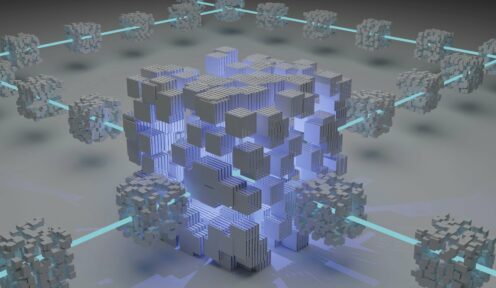
25.04.2024
Blockchain, DLT Technology, Mining and Consensus Protocols explained with 50 questions and Answers (4).
Can any miner intervene in the process?. How, and why, do the miners compete? What sense does it make to them?. Is it common for miners to make a living from the incentive they receive for mining?. What would happen if miners stopped competing to solve the mathematical problem in Bitcoin?
 Por
Sanz González , María
Por
Sanz González , María 12. Can any miner intervene in the process?
In theory, yes, anyone with internet access and the necessary hardware can participate in Bitcoin mining. However, in practice, mining has become increasingly centralised in recent years.
Reasons (and risks) of mining centralisation:
- We have previously announced that we would address this topic. Centralisation is the biggest risk of Blockchain technology.
- Economies of scale: Large mining operations, known as mining pools, can benefit from economies of scale, allowing them to be more efficient and profitable than individual miners.
- Competition: Competition on the Bitcoin network is fierce, and only miners with the highest hashing power stand a chance of receiving block mining rewards.
- Energy costs: Bitcoin mining consumes a lot of energy, making electricity costs an important factor in profitability. Regions with cheaper electricity tend to have a higher concentration of miners.
Consequences of the centralisation of mining:
- Risk of 51% attacks: If a single group or coalition of groups were to control more than 50% of the network’s hashing power, they could theoretically carry out a 51% attack, where they could reverse transactions, double-spend or even take control of the network.
- Reduced security: A network with fewer miners is more vulnerable to attacks, as there are fewer people monitoring the network and looking for malicious
- Less decentralisation: Bitcoin mining is touted as a decentralised technology, but the centralisation of mining runs counter to this principle. This can result in a small number of actors having excessive control over the network.
13. How, and why, do the miners compete? What sense does it make to them?
Hash race:
Miners compete against each other to be the first to find the correct value for the hash. The first miner to do so wins the reward and adds a new block to the blockchain.
Competition between miners can be explained as follows:
- Hardware: Miners use specialised hardware to perform complex calculations at high speed. The miner with the most powerful hardware has the best chance of finding the correct value and winning the reward.
- Software: Miners also use specialised software to optimise their mining process. This software can help miners find blocks faster and reduce their energy consumption.
- Mining pools: Some miners join mining pools to combine their hashing power and increase their chances of finding a block. When a mining pool finds a block, the reward is divided among the pool members based on their contribution.
14. Is it common for miners to make a living from the incentive they receive for mining?
Yes, for some miners, the reward for mining is their main source of income. However, this depends on a number of factors, including:
- The price of Bitcoin: The higher the price of Bitcoin, the higher the value of the reward for mining.
- The cost of electricity: The cost of electricity can be an important factor in the profitability of Bitcoin mining.
- Efficiency of mining hardware: Miners with more efficient hardware can make more profit.
- Mining difficulty: The difficulty of mining increases as more miners join the network.
In general, Bitcoin mining can be a lucrative activity, but it is not a guarantee of success. Miners should consider the risks and associated costs before investing in mining hardware.
15.- What would happen if miners stopped competing to solve the mathematical problem in Bitcoin?
If miners were to stop competing to solve the mathematical problem in Bitcoin, the network would be severely affected, with negative consequences for its security, performance and value. Mining is a fundamental component of the Bitcoin protocol and is essential to maintaining the integrity and functioning of the network.
Importantly, the Bitcoin ecosystem is constantly evolving and solutions are being developed to address some of the challenges mentioned above. For example, Proof of Stake (PoS) is a mechanism
alternative consensus that does not require proof-of-work mining, which could reduce energy consumption and improve network scalability.
If miners were to stop competing to solve the mathematical problem in Bitcoin, the network would be affected in a number of ways, with negative consequences for its security, performance and value.
Security impact:
- 51% attacks: The likelihood of 51% attacks would increase, where a single actor or group of actors could control more than 50% of the network’s hashing power. This would allow them to reverse transactions, double-spend or even take control of the network.
- Decreased transaction confirmation: Transactions could take longer to confirm, as there would be fewer miners validating transactions and adding them to the blockchain.
- Increased risk of forks: The network could be more susceptible to forks, where the blockchain splits into two or more branches, which could lead to confusion and loss of funds.
Impact on performance:
- Slower transaction processing: The network would become slower, as there would be fewer miners processing transactions. This could affect the user experience and the usefulness of Bitcoin as a means of
- Increased network congestion: The network could become congested, as there would be fewer miners to process the volume of transactions. This could increase transaction fees and make Bitcoin less attractive for use.
Impact on value:
- Declining price: Bitcoin’s price could decline as investors may lose confidence in the security and viability of the
- Uncertainty about the future: Uncertainty about the future of Bitcoin could increase, which could discourage adoption and investment in the
If you enjoyed this article, you may also find the following articles interesting to read:
Contacto No te quedes con la duda, contacta con nosotros. Estaremos encantados de atenderte y ofrecerte soluciones.











